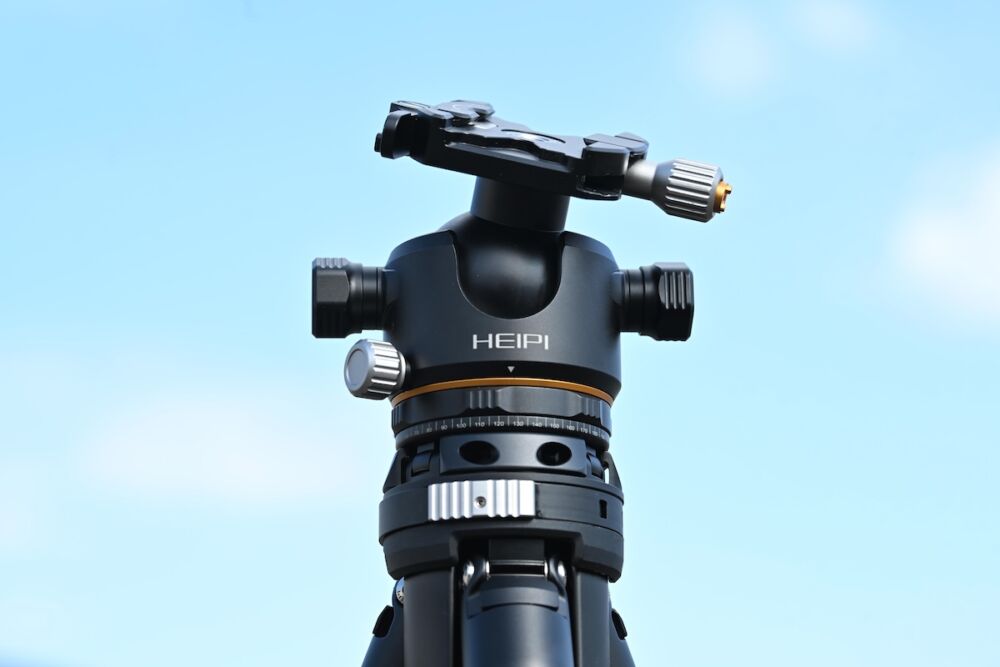Step aside, “Holy Trinity”, the Dynamic Duo is here! Tamron has done something totally crazy, and yet absolutely genius…
Okay, let’s have the backstory: when Tamron first announced their 17-35mm f/2.8-4, I was super excited yet extremely skeptical. It sounded like the ultimate travel landscape/nightscape photography lens. But, was it any good? It’s just $599, and it’s a zoom that hits f/2.8 at one end. I was very curious to try it…
Then, Tamron doubled down, and announced their 35-150mm f/2.8-4 VC. With a price tag of ~$799, I was absolutely intrigued! Did they just create the ultimate two-lens kit, a duo that almost any type of photographer could find useful?
Why was I so skeptical? Well, let’s be honest- both superzooms and variable aperture zooms have a pretty bad reputation for being a serious compromise, and if you’re serious enough about photography to shoot with a full-frame DSLR, then you probably assume you should avoid either of these types of lenses.

Okay, now the SPOILER ALERT: By totally re-thinking the superzoom concept and creating two separate lenses instead of just one, Tamron has proven wrong both assumptions about variable apertures and high-magnification zoom ranges. In short, these lenses are pretty awesome, and they accomplish something that no other single lens (or pair of lenses) can!
Here’s the highlights of what you get: for a total of just ~$1400, you can reach from 17mm to 150mm, with incredible sharpness that doesn’t go soft at either end or anywhere in the middle, PLUS
you can hit f/2.8 not just once, but twice throughout the range!
Yes, you do have to change lenses sometimes, which can defeat the whole purpose of a superzoom for some people. And yes, there are a couple of other compromises that had to be made in order to achieve the portability and price tag. Still, this is a pretty incredible accomplishment, period.
We’ll explain all the good (and the bad) in this review of Tamron’s two-lens dynamic duo. After the spec sheet below, we’ll talk about what types of photographers these lenses are made for, the major pros and cons of each lens, and how they compare against the various competing options. Read on!
Tamron 35-150mm f/2.8-4 | Specifications

Focal Length & Angle of View: 35-150mm, 63-16 deg.
Mounts: Nikon F, Canon EF (DSLR)
Aperture & range: f/2.8-4.0, f/16-22
Optical Construction: 19 elements in 14 groups
Autofocus: Yes, “OSD” type
Manual Focus: Yes, only when switched to MF, no scale markings
Mechanical Construction: metal, plastic, rear gasket
Magnification & focus distance: 0.27x (1:3.7), 1.48 ft / 45 cm
Size:3.3×4.9″ (84x124mm)
Weight: 790g (1.74 lbs)
Filter Threads & Hood: 77mm, detachable hood
Price: $799 (Buy on B&H, Adorama, & Amazon)
Tamron 17-35mm f/2.8-4 | Specifications
Focal Length & Angle of View: 17-35mm, 103-63 deg.
Mounts: Nikon F, Canon EF (DSLR)
Aperture & range: f/2.8-4.0, f/16-22
Optical Construction: 15 elements in 10 groups,
Autofocus: Yes, “OSD” type
Manual Focus: Yes, only when switched to MF, no scale markings
Mechanical Construction: metal, plastic, rear gasket
Magnification & focus distance: 0.2x, 11″ (28cm)
Size: 3.3×3.54″ (83x90mm)
Weight: 460g (1 lb)
Filter Threads & Hood: 77mm, detachable hood
Price: $599 (Buy on B&H, Adorama, & Amazon)
Tamron 17-35mm & 35-150mm f/2.8-4 | Who Should Buy It
Many types of photographers dream of that “holy trinity” of zoom lenses: A 16-35mm f/2.8, a 24-70mm f/2.8, and a 70-200mm f/2.8. These days, however, all of those lenses are rather enormous and relatively pricey. Nikon, Canon, and Sony’s name-brand f/2.8 holy trinities can cost over $6K, and weigh a few kilograms. The third-party options, including from Tamron, are much more affordable, but still incredibly heavy and large for any type of casual photography.
For example: the Tamron 15-30mm f/2.8 VC G2, 24-70mm f/2.8 VC G2, and 70-200mm f/2.8 VC G2 cost only $3800 total, but still weigh 3.5kg (7.7lbs). The Tamron 17-35mm f/2.8-4 and 35-150mm f/2.8-4 VC collectively weigh a mere 2.7 lbs!! On a Nikon D750, that’s barely 5 lbs for the whole system!
So, what if you don’t actually need f/2.8 at every single focal length in your entire zoom range? What if you don’t mind cropping a little bit in post-production (or in-camera) to get a little extra reach for a telephoto subject?

Now, Tamron has offered a totally new compromise: With just two lenses, you can get some of that “holy trinity” capability, but in a superzoom style package.
Travel photographers who want to cover a very wide range, but are also serious about a specific type of photography such as portraits or nightscapes, will find these focal ranges and apertures to be a perfect balance.
Landscape photographers who want something ultra-portable but still need access to f/2.8 at 17mm for nightscapes or astrophotography, will also find this setup to be almost perfect. The 17-35mm f/2.8 in particular is a dream lens for anyone looking to pair a lightweight wide-angle zoom with their lightweight Nikon D750 or Canon 6D2, for example.
 For those who are wondering, here’s what the whole range from 150mm to 17mm looks like.
For those who are wondering, here’s what the whole range from 150mm to 17mm looks like.
(Now you know why they say it’s “unflattering” to photograph ultra-wide, close-up portraits!)
Portrait/street photographers who want a single zoom for casual candids and portraits, without sacrificing the DOF they can get at f/2.8 on full-frame, might find that the 35-150mm f/2.8-4 is all they need!
Tamron 17-35mm & 35-150mm f/2.8-4 | Pros
Pro: Image Quality
Okay, as always let’s cut right to the chase; here’s the TL,DR: Both of these lenses are extremely sharp, center-to-corner, at wide-open apertures, through their whole zoom range. There’s definitely a bit of (correctable, with the lens profile) things like vignetting and distortion, but both are virtually nonexistent once corrected. All other aspects of image quality are either impressive, or at least decent.
(If that’s all you need to know, CLICK HERE to skip to the rest of the pros and cons!)
Sharpness
OK, here’s the usual report, which as become pretty common these days thanks to high-tech optical design: Both of these lenses are incredibly sharp wide-open, through their whole zoom range.
What I would call “professionally acceptable” sharpness reaches easily to the rule-of-thirds areas. In the extreme corners, sharpness is awesome by f/5.6-8, and more than good enough for serious landscape photography on modern high-megapixel cameras.



Colors & Contrast
Colors and contrast are fantastic on both lenses. One thing I did notice, though, was that it seemed like both lenses were either slightly warm at their wide end, or slightly cool at their telephoto end. Thankfully it is a simple WB Temperature slider correction in your raw workflow, and NOT any sort of nasty Tint (pink/green) correction.
Vignetting & Distortion
As you might imagine from any variable aperture zoom, both of these Tamrons have quite a bit of vignetting at their widest end and fastest aperture. Their actual transmission of f/2.8 is only going to be achieved within the rule-of-thirds box, so keep that in mind- if you truly do need a low-light beast, you’re still better off getting an f/1.8 prime even if you’re shooting it at f/2.8, because a stopped-down lenses’ transmission is much more efficient than a wide-open one.


The good news is, Adobe’s lens correction profiles both work wonderfully on these lenses, leaving perfectly straight lines and only a faint amount of leftover vignetting that you can correct with a subtle bump to the manual vignetting correction.
Bokeh & DOF
Here is where, historically, variable-aperture zooms used to truly suffer. Not only were they usually f/3.5-5.6, or f/4.5-6.3, but they’re also simply not optimized for smooth bokeh, period. So you can usually expect less shallow DOF, and “busy” bokeh even when you can achieve good background blur.


The Tamron 35-150mm f/2.8-4 VC, in particular, utterly destroys this common drawback. Not only is DOF great thanks to its f/2.8-4 aperture, but the bokeh itself is rather smooth and creamy. Of course, it’s no Tamron SP 35mm f/1.4, and if you want truly ridiculous (another scientific term!) bokeh then you should always pack at least one fast prime to go with your more practical zoom(s).

The 17-35mm f/2.8-4 also has very smooth bokeh, however being a much wider-angle lens, and being “only” f/4 by the time it gets to 35mm, it’s not a lens you’d buy specifically for bokeh, again that’s what a 35mm or 50mm prime is for.
Flare & Sunstars
Flare is well-controlled, very few “flare dots” thanks to great optical coatings. If you do want that “warm flare” haze, though, just be careful with how much sun you let hit your lens; it can turn magenta if you completely explode your shots…



Sunstars are great at f/11 on both lenses, however, at faster apertures, they’re not very noticeable.
Color Fringing, Aberrations, Coma & Astigmatism, Field Curvature
Here’s yet another aspect of image quality that is easily controlled using raw workflow corrections, such as the default “Remove Chromatic Aberration” check-box, or the manual color fringing slider.
Simply put, yes, there’s a faint bit of color fringing, and a tiny amount of coma/stigmatism, but it’s impressively near-zero for such portable, affordable lenses.




Field curvature, a concern for nightscape photographers, is also impressively low at either lenses’ widest focal length and f/2.8 setting. That’s great news particularly for the 17-35mm f/2.8, making it a perfect lens for both wide-field astrophotography and traditional landscape work.
Macro Ability
As you may have noticed above, the Tamron 35-150mm f/2.8-4 is particularly capable of beautiful macro shots, especially at 150mm. Sharpness does not suffer much at all when focusing as close as possible!
Having said that, the 17-35mm f/2.8-4 is no slouch, either, when you focus as close as possible, at both 35mm and 17mm:


Pro: Portability
If you want a compact, lightweight lens, you almost always have to compromise on something. In the past, you always had to put up with poor image quality, and possibly even poor construction. The same thing went for affordability- if you wanted something cheap, it probably wasn’t going to be very good, period.
These days, however, even the affordable lenses are achieving incredible image quality, thanks to high-tech computer design. But, are they getting more portable? Not at all, in fact, if anything, many lenses have set new records for size and weight in recent years.
Many people have begun to just concede that if you want a decent optic, you’ll have to lug around a “massive beast” of a lens. Tamron in particular, though, has had a long reputation for offering lightweight, portable optics. In fact, it is their latest G2 lenses that are a bit of a departure from their usual M.O! (Well, not exactly; they’re bigger and heavier than most other Tamrons, however, they’re still lighter than the competing options from Sigma!)
 All this to say, the 17-35mm and 35-150mm f/2.8-4 are not just sharp, and affordable, but they’re also incredibly portable for the range and apertures they cover!
All this to say, the 17-35mm and 35-150mm f/2.8-4 are not just sharp, and affordable, but they’re also incredibly portable for the range and apertures they cover!
The 17-35mm f/2.8-4 in particular is downright tiny, especially considering that it’s made for DSLRs, and that it is sharp enough for both serious landscape and nightscape photography!
The 35-150mm f/2.8 is, of course, a bit bigger and heavier, but it’s also still just a single lens, and that’s the advantage. No other single lens offers that range and aperture speed in a single package, period. Yes, you could get a similarly portable lens that reaches from, say, 28mm to 300mm, or 24mm to 120mm. But those lenses won’t go to f/2.8 at the wide end, and they might not be as sharp as the Tamron at one end or the other.
Pro: Value
The price tag of these two lenses together, let alone individually, is really one of the most impressive things about the pair. Even without any rebates, they’re a steal. Such a good price makes the buying decision very, very easy: Either you need what these lenses offer, or you’re looking for a totally different kind of lens.
Actually, price alone is never the whole story when it comes to a lens’ value. The other factor here is this: No other lenses offer what either of these lenses offer. There is no 35-150mm f/2.8-4 lens on the market, period, and all of the f/2.8-4 ultra-wide zooms out there are basically ancient, terrible lenses.
Thus, in terms of “value”, both of these lenses are essentially incomparable.
Tamron 17-35mm & 35-150mm f/2.8-4 | Cons
So, they’re sharp, they’re portable, and they’re affordable. It sounds like perfection, right? Actually, a few corners were indeed cut in order to achieve such good value and optical performance, unfortunately. They’re certainly not deal-breakers for most types of photographers, except for maybe the most discerning low-light or fast-action shooters:
Con: Autofocus Performance
In both the 17-35mm and 35-150mm, Tamron used what seems to be slightly older autofocus technology: it’s the kind of AF motor that makes a faint mechanical sound, almost like the “screw-drive” autofocus of Nikon’s old AF-D lenses. Even though Tamron calls this autofocus OSD, or Optimized Silent Drive, it is indeed faintly audible. You won’t hear it in video unless it’s dead silent, though, and you’ll likely never hear it if you’re using a shotgun mic with a deadcat.

(Note: to avoid any confusion- the AF is indeed built into the lens, so they’ll still work on your beginner Nikon (DX) DSLRs that lack an AF-D motor.)
The bigger problem is, the capability of that AF motor itself: you get slightly slower, less reliable autofocus compared to the cutting-edge AF technology found in lenses such as Tamron’s G2 series, which has USD (Ultrasonic Silent Drive) autofocus that is utterly silent, impressively fast, and highly accurate.


For me as a landscape photographer, this is a non-issue for the 17-35mm f/2.8-4 Di OSD. The AF works great, and I’ll be using manual focus in any tough conditions anyways.
For a portrait photographer using the 35-150mm f/2.8-4 Di VC OSD, this might result in a bit of a struggle to nail focus in extremely low light, or to track fast-moving subjects. So, if you’re a professional wedding, wildlife, or action sports photographer, just pony up for that 70-200mm f/2.8!
Having said that, the compromise that Tamron made is likely worth it to anyone who wants what the lens offers, especially compared to a superzoom.
Design & Build Quality

Another side-effect of the oldschool style of autofocus is a design annoyance that I haven’t seen on an autofocus lens in many years, indeed not since the days of Nikon AF-D lenses: The manual focus ring is mechanically locked to the focus motor when its switch is set to “AF”. Therefore, turning the focus ring without setting it to “MF” will force the AF motor to spin, which is usually a no-no. I don’t think you can really damage the lens unless you go crazy racking the manual focus ring back and forth incessantly, but I still miss the effortless real-time manual focus adjustments that you can make with USD (USM, SWM, SSM, HSM, etc) lenses.
Also, as far as portable travel lenses go, the 35-150mm f/2.8-4 is definitely more of a superzoom than a truly compact zoom. It’s not ultra-lightweight, (it feels about the same as most 24-105’s) and with the hood attached it is rather large and not exactly “incognito”, especially at 150mm. If you’re looking for a truly “stealth” candid lens, especially at telephoto focal lengths, your best bet is still a compact 85mm prime like the Tamron 85mm f/1.8 VC.

Last but not least, I have to mention the surface of the lenses’ material, especially the hoods: Even though they’re made of that high-grade plastic that I actually really like, because it is very strong and unlikely to actually break, …the surfaces themselves do show marks and general wear a little more easily than the more flagship type surfaces that can stay looking “brand new” for many months or even a year after buying them.
Again, this is a non-issue for me, because the lenses themselves are quite sturdy, but I thought I’d mention it for anyone who is truly concerned with outward appearance.
Tamron 17-35mm & 35-150mm f/2.8-4 | Compared To The Competition
Both of these lenses stand alone in their respective categories. Most other 17-35mm or 16-35mm lenses are either a constant f/2.8 and heavy + expensive, or a constant f/4. And, of course, there simply is no other modern-generation 35-150mm lens out there, period.
Therefore, we can only compare these two lenses against the next-closest options: true super-zooms, and the “holy trinity” zooms.
If you really hate changing lenses, and want to cover as much range as possible in a single lens, then a 28-300mm or 24-120mm is an OK choice. However, it’s going to be a significant compromise in both sheer aperture brightness and overall image quality. Plus, you’ll likely miss that 17mm wide end a whole lot!
Canon’s various 24-105mm f/4 lenses, and Nikon’s 24-120mm f/4 VR, are both decent performers; they’re sharp and relatively affordable. So, again, if you had to choose only one of these two Tamron lenses, (the 35-150mm) …you’d likely miss the 24mm end just as much as you’d miss f/2.8 on the Canon/Nikon lens.
Alternately, what if you dont’ mind changing lenses, and you have a much bigger budget, and you don’t care how much your gear weighs? What are you still doing here; go buy the Tamron 15-30mm f/2.8 VC G2, 24-70mm f/2.8 VC G2, and/or 70-200mm f/2.8 VC G2! They’re all incredible performers at a relatively affordable price.

Then again, if you are still reading this review, you probably DO care about at least one of those factors. Whether it’s budget and/or portability, you should consider both the Tamron 17-35mm and 35-150mm.
Now, I know they’re totally different systems, but considering how common adapters are these days, how about the awesome new Tamron 17-28mm f/2.8 and 28-75mm f/2.8, which are Sony FE mount lenses? (And the likely ~75-~200mm f/2.8 FE that will eventually see too?)
Yup, the 17-35mm f/2.8-4 is about as sharp as the 17-28mm f/2.8 FE. And the 35-150mm f/2.8-4 is about as sharp as the 28-75mm f/2.8, too.
That is an impressive feat for such a small full-frame DSLR lens, which is constrained by a significantly longer flange distance compared to that of a mirrorless mount. So, if you’re a Sony shooter and you’re thinking of using either of these lenses on an adapter, don’t; just get the dedicated Sony FE mount Tamrons. Oh, and the autofocus on the Tamron 17-28mm f/2.8 and 28-75mm f/2.8 is INCREDIBLE, but we’ll save that for their own dedicated review, which will be published soon!
In short, I’m utterly delighted by the performance of the 17-35mm and 35-150mm, compared to any alternative. They’re an odd pair at first glance, but once you realize what they can offer, they’re in a league of their own.
Tamron 17-35mm & 35-150mm f/2.8-4 Review | Conclusion

Simply put, if you’re attracted to the idea of covering 17mm thro 150mm with just two lenses, and hitting f/2.8 at both 17mm and 35mm, this kit is a totally unique, desirable kit, ideal for a lot of different kinds of photography.
It is unfortunate that the autofocus motors in these lenses is a little bit oldschool, but they work surprisingly well in most lighting conditions, and all but the most serious professionals will be able to get good use out of their autofocus.
The VC is a really nice touch for the 35-150mm, and isn’t missed too much on the 17-35mm.
The sharpness on both lenses is unprecedented for a superzoom, indeed, it’s roughly on par with a holy trinity of pro zooms!

The 17-35 is perfect for any type of photographer, hobbyist or serious pro, who wants a portable ultra-wide lens that hits f/2.8 at its wide end. It’s sharp enough for traditional landscapes at f/5.6-8+ at any focal length, and it’s sharp enough at 17mm and f/2.8 for serious astro-landscape work. What more could you ask for? Oh, and it takes 77mm filters, instead of 82mm, or crazy adapter filter systems like you would need on the Tamron 15-30mm f/2.8 VC.














